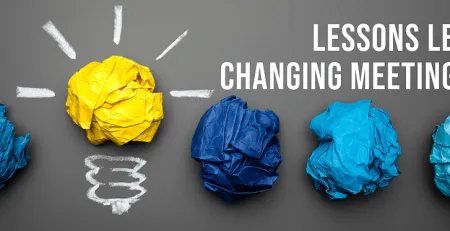Top 5 Trends In Talent Development
A top challenge facing talent development professionals is ensuring that employees have adequate time or that they can make time for learning and development as part of their work. Conversely, the top reason that employees feel they are held back from learning opportunities is that they do not have the time to integrate these learning experiences and opportunities into their workday or schedule.
In order to cultivate a learning environment, it is important to focus on a few key areas within an organization to support talent development and growth.
- Train for soft skills – A current focus for many Learning and Development leaders is closing the skills gap. A significant number of CEO’s believe a lack of highly important skills is one of the number one threats to growth for an employee and an organization. Soft skills are often overlooked and the gap for soft skills is continuing to expand. How can employees grow, advance and become leaders if they are lacking some of the most important and fundamental skills they need to thrive in the workplace? As an L&D professional, it is important to provide opportunities for your employees to build their confidence, communication, creative thinking, problem-solving, and decision-making skills and abilities. Not only will this help build employees up and leverage their talent, it can increase the connection between management and their direct reports, coworkers and their work creating a greater sense of loyalty and increase talent retention.
- Track skill development– Without the proper monitoring of an employee’s skill development, it is hard to determine what works well for them, how their learning experience is progressing and if the learning environment and opportunities are as effective as they can be. Many talent managers and executives believe the rates of retention and team metrics on performance are some of the most effective ways to measure the effectiveness of a learning program or infrastructure. Oftentimes the use of learning programs increases the rates of retention, employee experience and the ability to apply those learnings at work. It has been shown that employees who are given a greater opportunity to learn, grow and develop their skills and abilities are more likely to stay loyal to the organization who provided them with those opportunities and experiences.
- Have options for employee learning preferences – After passing through a standard schooling system, it is obvious to see that not all people learn the same way. Everyone has various methods and rates of learning that work or don’t work for them. With the growth of technology and a new focus on employee experience and learning, there is now a plethora of options to choose from to help professional development – all at a rate with methods that are ideal for them and their situation. Most employees prefer to learn at their workplace and at their own pace, with many employees opting to take on their learning at the point of need. Because of this, many talent development managers are becoming more dependent on the use of online learning for their solutions. Advancements such as micro-learning can make it easy and convenient for employees to develop their skills and knowledge concisely at any time and from any location through tools such as webinars, blogs and podcasts. Why are you reading this blog right now? Probably to learn more about organizational development for you and your team, and that right there is a good example of microlearning.
- Learning is essential for managers too– When it comes to learning and development, many people first think of ways that managers, executives and talent development teams can enhance and grow the skills of their employees. However, it is crucial not to forget that not only is learning important for managers, but it can also increase employee engagement. Many employees will participate in a learning course and are more willing to devote time and effort to enhance or develop more skills if it was recommended and encouraged by a manager. It is not only important for executives and managers to encourage employees to participate in learning and development programs, but also to participate in learning and development events themselves and discuss talent development resources and be open about promoting a culture of learning. Learning may be another huge task to add to a manager’s workload, but by keeping it simple and making it easy for them to encourage learning opportunities; successful employee learning can save management time and improve overall business development.
- People analytics are important – It is the age of data – at work, at home and everywhere – analytics, data collection and information are the names of the game. People analytics brings a human side to data and many talent development professionals are using it to create a learning experience in their organization and to aid in their employee’s growth and development. Talent development professionals use people analytics and plan to use it increasingly for a variety of important roles. This includes identifying skills gaps and measuring employee’s performance to determine what new skills they may need to develop so they can perform to the best of their abilities. Talent assessments are a good way to support talent and organizational development to create positive change in the workplace. People analytics can be used for a multitude of purposes including turning emerging leaders into next-generation leaders, weaving the importance of learning into the business culture.
Despite there being some challenges to creating a learning culture at your workplace these 5 tips can help guide you in the right direction of incorporating learning and development into your organization. Every step closer to developing talent is a step in the right direction!
Visit https://storefront.mhs.com/collections/talent to learn more about how to further develop and manage talent in the workplace. Our range of Talent assessment tools are ideal for use in coaching, organization and leadership development, selection, and succession planning. Please contact us at [email protected] for any inquiries.










